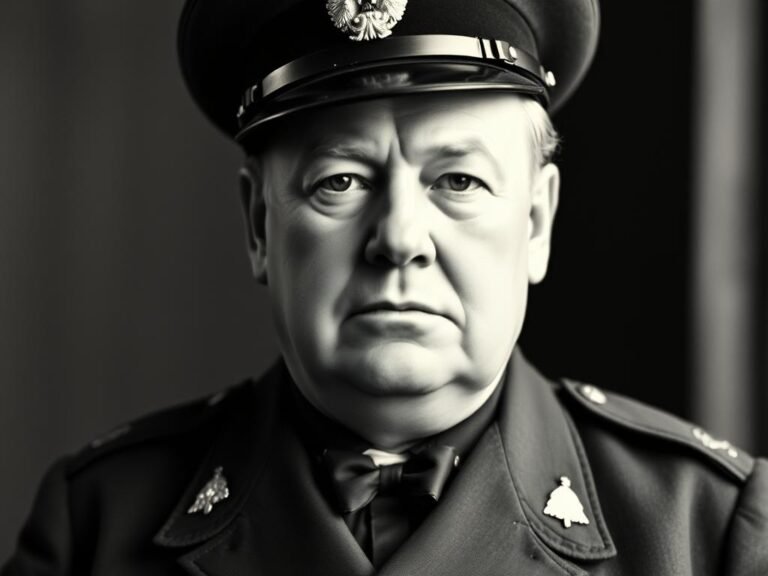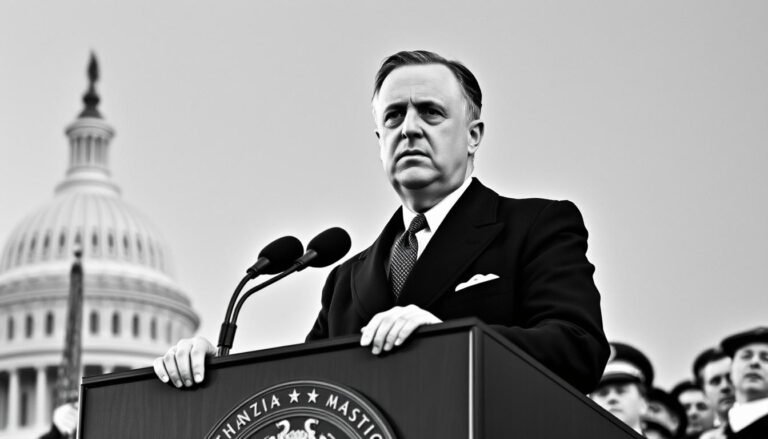Joe Biden’s Long Road to the White House
When Joseph Robinette Biden Jr. was sworn in as the 46th president of the United States on January 20, 2021, it marked the culmination of a political journey spanning nearly five decades. His path to the presidency was neither direct nor easy, characterized by personal tragedy, political setbacks, and remarkable resilience. From his early days as a young senator from Delaware to becoming vice president under Barack Obama and finally securing the nation’s highest office at age 78, Biden’s story embodies perseverance in American politics.
Early Life and Challenges: Forging Resilience
Biden’s early years in Scranton shaped his working-class identity
Born in 1942 in Scranton, Pennsylvania, Joe Biden’s early life was rooted in working-class Irish Catholic values. As the eldest of four children, he learned responsibility early, but also faced significant personal challenges that would shape his character and political outlook.
Overcoming a Stutter
Perhaps one of Biden’s most formative challenges was his severe childhood stutter. Kindergarten speech therapy proved ineffective, so young Biden took matters into his own hands. He practiced relentlessly, memorizing poetry and watching his lips in the mirror with a flashlight. This determination transformed a potential liability into a source of strength, though traces of his stutter would occasionally resurface throughout his career.

Biden during his time at Syracuse University Law School
Personal Tragedy and Perseverance
After graduating from Syracuse University Law School in 1968, Biden’s life and career seemed on a promising trajectory. By 1972, at just 29 years old, he had achieved the improbable by defeating incumbent Republican Senator J. Caleb Boggs. But weeks after this victory, tragedy struck. His wife Neilia and 13-month-old daughter Naomi were killed in a car accident, while his sons Beau and Hunter were seriously injured.
Biden considered abandoning his newly won Senate seat but was persuaded to serve. His swearing-in ceremony took place at the hospital where his sons were recovering. This profound loss shaped Biden’s approach to both politics and life, instilling a deep empathy that would become his political trademark.
“The first thing I learned as a young senator was that there are things more important than political power or position.”
Political Career Milestones: From Senator to Vice President

Biden as chairman of the Senate Judiciary Committee
The Senate Years
Biden’s 36-year Senate career was defined by his work on the Judiciary Committee and Foreign Relations Committee. As Judiciary Committee chairman for 17 years, he presided over six Supreme Court confirmation hearings, most notably those of Robert Bork and Clarence Thomas.
The 1987 Bork hearings showcased Biden’s preparation and legal acumen. After extensive questioning about Bork’s judicial philosophy and record, the Senate rejected the nomination 58-42. However, Biden faced criticism for his handling of Anita Hill’s testimony during Clarence Thomas’s confirmation hearings in 1991, a moment he would later acknowledge as a failure.

Biden with the Violence Against Women Act, one of his key legislative achievements
As a legislator, Biden left his mark through significant legislation. The Violence Against Women Act of 1994, which he described as his “proudest legislative accomplishment,” provided federal protections for victims of domestic violence. He also played a leading role in crafting the 1994 crime bill, legislation that would later become controversial for its role in mass incarceration.
Presidential Ambitions
Biden’s first presidential campaign in 1987 ended abruptly after a plagiarism scandal. He had borrowed passages from British Labour Party leader Neil Kinnock without attribution, and reporters uncovered other instances of unattributed material in his speeches and academic work. The controversy forced him to withdraw before the first primaries.

Biden announcing the end of his 1988 presidential campaign
Shortly after this political setback, Biden faced a life-threatening brain aneurysm in 1988 that required emergency surgery. After a seven-month absence, he returned to the Senate, his political resilience once again tested and proven.
The Obama-Biden Partnership
Biden’s second presidential bid in 2008 also faltered early. After finishing fifth in the Iowa caucuses, he withdrew from the race. However, this campaign ultimately led to a different path to executive office when Barack Obama selected him as his running mate.

Obama and Biden celebrating their 2008 election victory
As vice president, Biden established himself as a key advisor to President Obama. He oversaw implementation of the 2009 Recovery Act, headed the administration’s cancer moonshot program, and played crucial roles in foreign policy decisions, particularly regarding Iraq and Afghanistan. The close working relationship between Obama and Biden evolved into a genuine friendship that both men frequently referenced.
“Think where man’s glory most begins and ends / and say my glory was I had such friends.”
The 2020 Presidential Campaign: A Third and Final Bid

Biden announcing his 2020 presidential campaign
After declining to run in 2016 following the death of his son Beau from brain cancer, Biden launched his third presidential campaign on April 25, 2019. He framed his candidacy as “a battle for the soul of this nation,” directly challenging President Trump’s divisive rhetoric and citing the white supremacist march in Charlottesville as his motivation to run.
Primary Struggles and Comeback
Biden’s primary campaign initially struggled to gain traction. Critics questioned whether the 77-year-old former vice president was too old or too moderate for a Democratic Party increasingly influenced by progressive voices. After disappointing fourth and fifth-place finishes in Iowa and New Hampshire respectively, Biden’s campaign appeared to be faltering.

Biden with Representative James Clyburn, whose endorsement revitalized his campaign
The turning point came in South Carolina, where Representative James E. Clyburn’s influential endorsement helped Biden secure a decisive victory with 48.6% of the vote. This momentum carried into Super Tuesday, where Biden won 10 of 14 states, effectively consolidating the moderate wing of the party behind his candidacy as rivals like Amy Klobuchar and Pete Buttigieg suspended their campaigns and endorsed him.
Pandemic Campaign and Historic Selection
The COVID-19 pandemic transformed the 2020 campaign. Biden limited public rallies and when he did appear, supporters often listened from their cars, honking their approval. He made Trump’s handling of the pandemic a central campaign issue.

Biden and Harris at their nomination acceptance during the virtual Democratic National Convention
Fulfilling his promise to select a female running mate, Biden chose Senator Kamala Harris, making her the first woman, first Black, and first Asian American vice presidential nominee on a major party ticket. The largely virtual Democratic National Convention featured Biden accepting the nomination in a nearly empty arena, highlighting the unprecedented nature of the pandemic campaign.
Election Victory and Transition Challenges
The 2020 election saw record turnout with nearly 160 million votes cast. Biden secured 81 million votes to Trump’s 74 million, and won the Electoral College 306-232. However, President Trump refused to concede, falsely claiming election fraud and launching numerous legal challenges.

Biden and Harris celebrating their election victory with a socially distanced drive-in rally
The transition period was marked by unprecedented tension, culminating in the January 6, 2021 attack on the U.S. Capitol by Trump supporters attempting to disrupt the certification of electoral votes. Despite these extraordinary challenges, Biden was inaugurated on January 20, 2021, becoming the oldest president in American history at 78.
Presidency Challenges: Governing in Divided Times

Biden being sworn in as the 46th President of the United States
Biden assumed office facing extraordinary challenges: a raging pandemic that had claimed over 400,000 American lives, an economy in crisis, and a deeply divided nation. His inaugural address emphasized unity and healing: “We must end this uncivil war that pits red against blue, rural versus urban, conservative versus liberal.”
COVID-19 Response
Biden’s immediate priority was addressing the COVID-19 pandemic. He set an ambitious goal of 100 million vaccine shots in his first 100 days—a target his administration ultimately exceeded. The American Rescue Plan, a $1.9 trillion economic stimulus package, provided direct payments to Americans, extended unemployment benefits, and funded vaccine distribution.

Biden receiving his COVID-19 vaccine, modeling public health guidance
Economic and Infrastructure Initiatives
Beyond pandemic relief, Biden pursued ambitious economic and infrastructure plans. The Infrastructure Investment and Jobs Act, passed with bipartisan support, allocated $1.2 trillion for roads, bridges, public transit, broadband, and other infrastructure needs. His proposed Build Back Better Act, focused on social spending and climate initiatives, faced more significant legislative hurdles.
Foreign Policy Reorientation
In foreign affairs, Biden sought to restore traditional alliances strained during the Trump administration. He rejoined the Paris Climate Agreement and the World Health Organization on his first day in office. However, the chaotic withdrawal from Afghanistan in August 2021 drew criticism from both political parties and international allies.

President Biden at a NATO summit, reaffirming traditional alliances
Biden’s presidency has been characterized by his efforts to navigate polarized domestic politics while reasserting American leadership internationally. His legislative agenda has required careful negotiation in a narrowly divided Congress, testing his self-described skills as a dealmaker and consensus builder.
Legacy and Impact: Assessing Biden’s Political Journey

Biden embracing his family after being sworn in as President
Joe Biden’s political journey spans an extraordinary period of American history, from the Vietnam War era to the digital age. His career has been defined by both significant legislative achievements and notable controversies, personal tragedies and political triumphs.
Leadership Style
Biden’s leadership style emphasizes empathy, personal connection, and bipartisan cooperation. His decades in the Senate instilled a respect for institutional norms and compromise that has shaped his approach to governance. Critics argue this approach is outdated in an era of intense polarization, while supporters see it as essential for healing national divisions.

Biden working with a bipartisan group of senators on infrastructure legislation
Historical Significance
As the oldest person to assume the presidency, Biden represents a generational bridge in American politics. His selection of Kamala Harris as vice president broke significant barriers and reflected changing demographics in American leadership. His presidency follows one of the most unconventional and divisive in modern history, positioning him as either a transitional or transformational figure.
Biden’s personal resilience in the face of tragedy and political setbacks has become central to his public identity. From the loss of his first wife and daughter in 1972 to the death of his son Beau in 2015, Biden has repeatedly transformed personal grief into public empathy, most notably during the COVID-19 pandemic when he embraced his role as “consoler-in-chief.”
“I’ve long said that America is a nation that can be defined in a single word: possibilities.”
Conclusion: The Long Road Traveled

President Biden addressing the nation from the Oval Office
Joe Biden’s long road to the White House is a uniquely American story of perseverance. From a stuttering child in Scranton to the Oval Office, his journey spans nearly eight decades and reflects the complexities of American politics and society. Through personal tragedy, political setbacks, and eventual triumph, Biden’s career demonstrates that in American politics, the path is rarely straight and never guaranteed.
As the 46th president navigates the challenges of a divided nation and a changing world, his legacy continues to evolve. What remains constant is the resilience that has defined his life and career—a quality that ultimately carried him to the presidency after decades of striving and two failed attempts.
Biden’s story reminds us that political journeys are rarely defined by a single moment or achievement, but rather by the accumulated impact of choices, challenges, and character over time. His long road to the White House stands as a testament to persistence in pursuit of public service.
How did Biden’s personal struggles influence his approach to politics and policy?
Consider how Biden’s experiences with tragedy and personal challenges shaped his empathetic leadership style and policy priorities, particularly in healthcare and family support.
What does Biden’s presidency reveal about changes in American politics over the past 50 years?
Reflect on how the political landscape has transformed since Biden first entered the Senate in 1973, and what his presidency suggests about continuity and change in American democracy.
How might historians ultimately assess Biden’s place in American presidential history?
Consider the historical context of Biden’s presidency, the challenges he faced upon taking office, and the metrics by which his leadership might be evaluated by future generations.







